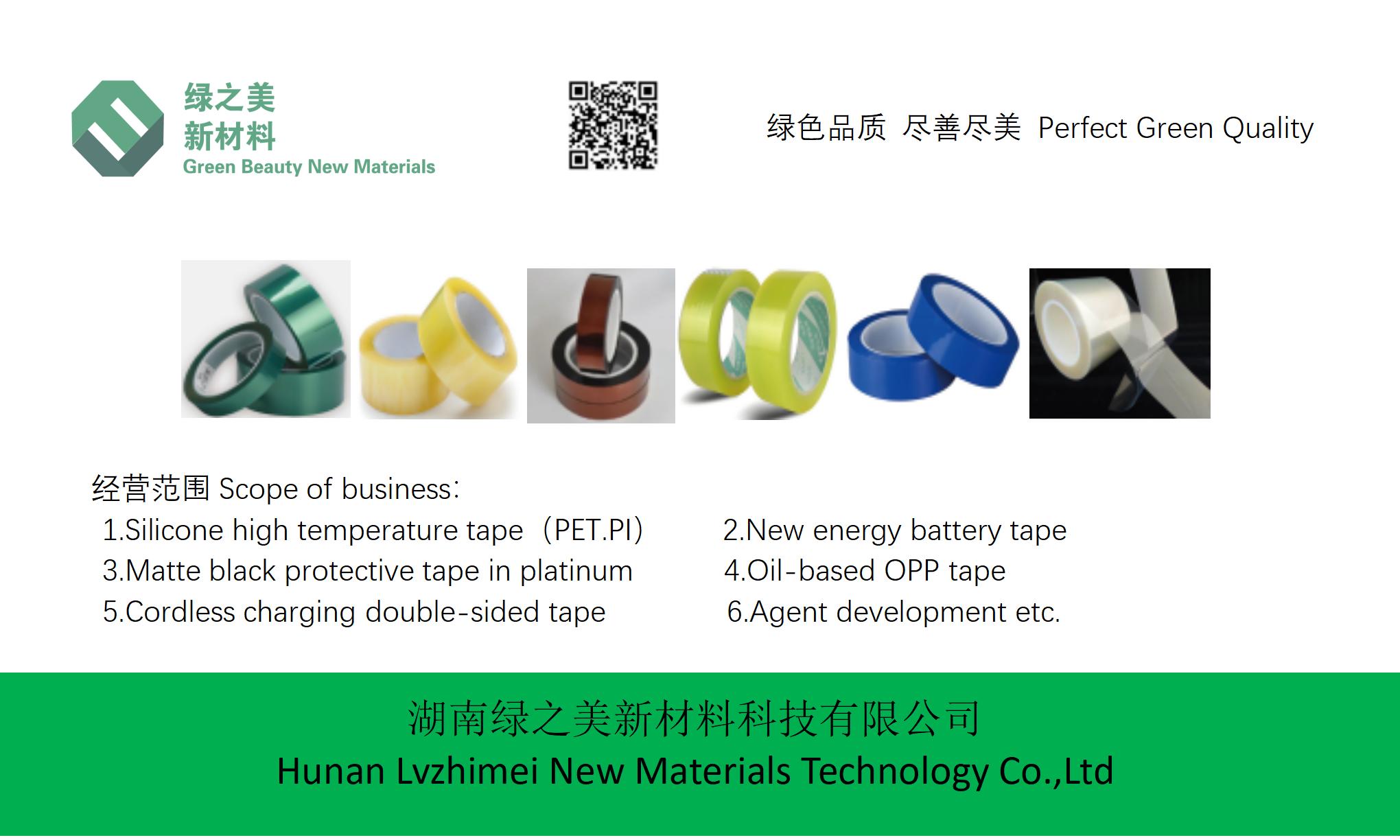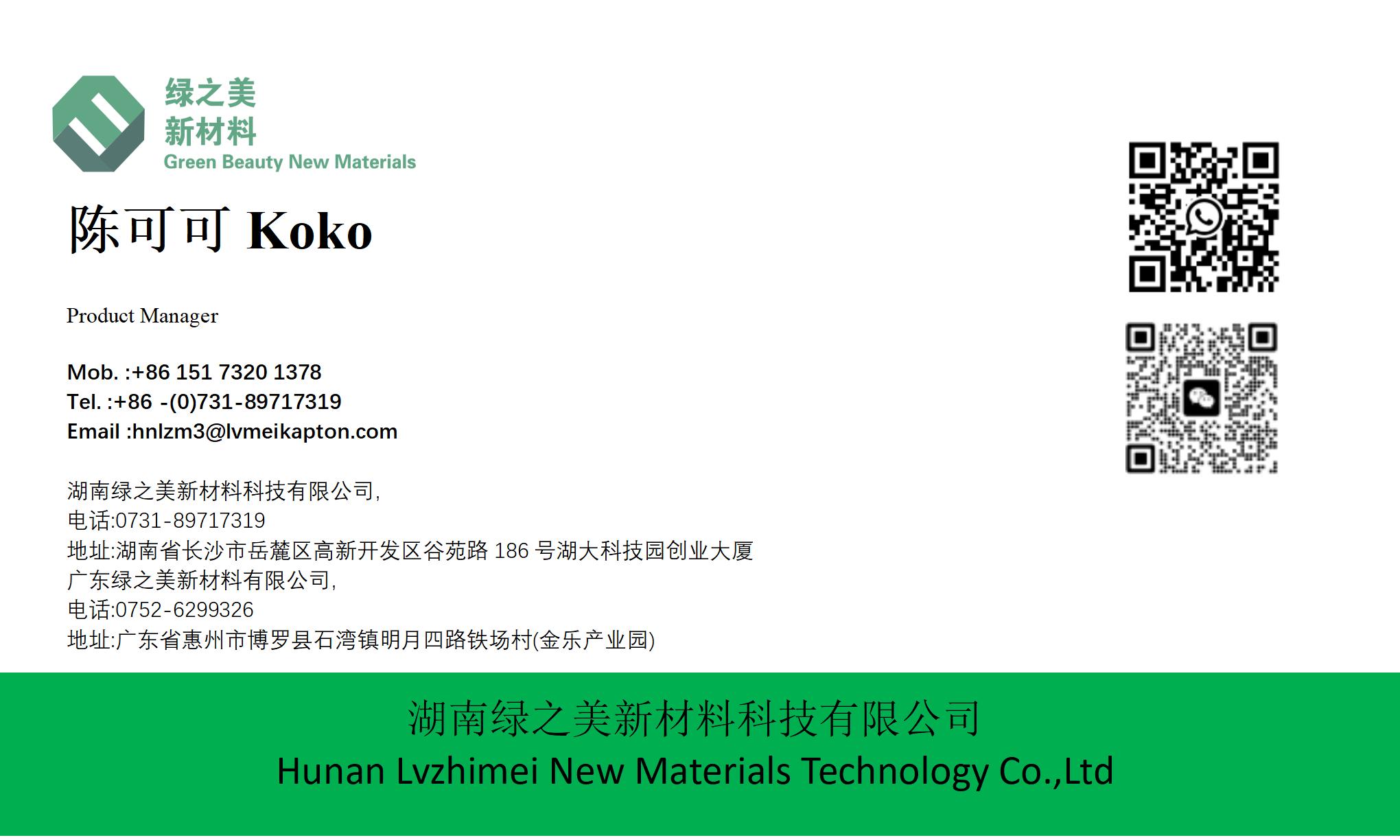hnlzm@lvmeikapton.com
+86 13787123465


Hunan Lvzhimei New Material Technology Co., Ltd.


NameDescriptionContent
How Does Gold Finger Electronics Polyimide Tape Kapton Improve Lithium Battery Performance? |https://www.lvmeikapton.com/
Source:
|
Author:Koko Chan
|
Published time: 2025-04-17
|
58 Views
|
Share:
This article delves into the ways Gold Finger Electronics Polyimide Tape Kapton enhances the performance of lithium batteries. Based on CATL’s 100Ah battery test, it demonstrates how the tape reduces impedance by 25% and effectively prevents electrolyte leakage. Additionally, its 0.03mm thickness contributes to a higher energy density when compared to Self - adhesive back blocking spray paint tape, making it a crucial material in lithium battery manufacturing.
1. Introduction
Lithium - ion batteries are at the core of modern energy storage, powering everything from smartphones to electric vehicles. As the demand for higher - performing, safer, and more efficient batteries grows, the materials used in their construction play a pivotal role. Gold Finger Electronics Polyimide Tape Kapton has emerged as a game - changing material in lithium battery manufacturing, offering a range of properties that directly contribute to enhanced battery performance.
2. Challenges in Lithium Battery Performance
2.1 Impedance Issues
Impedance in lithium - ion batteries can limit the rate of charge and discharge, reducing overall battery efficiency. High impedance results in energy losses in the form of heat during operation, which not only decreases the battery's usable capacity but also affects its lifespan. This is a critical issue, especially in applications where fast - charging and high - power output are required, such as in electric vehicles.
2.2 Electrolyte Leakage
Electrolytes in lithium - ion batteries are highly reactive chemicals. Any leakage can lead to short - circuits, reduced battery performance, and even safety hazards like fires or explosions. Ensuring the integrity of the battery enclosure and preventing electrolyte leakage is essential for the reliable and safe operation of lithium - ion batteries.
2.3 Energy Density Optimization
With the increasing demand for longer - lasting batteries in portable devices and electric vehicles, maximizing energy density has become a top priority. This requires the use of materials that are both thin and effective in performing their functions, such as insulation and protection, without adding excessive weight or volume to the battery.
3. Gold Finger Electronics Polyimide Tape Kapton: Properties and Their Impact on Battery Performance
3.1 Impedance Reduction
In CATL’s 100Ah battery test, Gold Finger Electronics Polyimide Tape Kapton demonstrated a remarkable 25% reduction in impedance. The tape's excellent electrical insulation properties help to minimize electrical resistance within the battery. When used to insulate battery components, such as electrodes and separators, it reduces the energy losses associated with electron transfer. This reduction in impedance allows for faster charge and discharge rates, improving the overall efficiency of the lithium - ion battery.
| Tape Type | Impedance Reduction in CATL's 100Ah Battery |
|---|---|
| Gold Finger Electronics Polyimide Tape Kapton | 25% |
| Self - adhesive back blocking spray paint tape | Negligible or no significant reduction |
3.2 Prevention of Electrolyte Leakage
The polyimide material in Kapton tape has high chemical resistance, making it highly effective in preventing electrolyte leakage. Lithium - ion battery electrolytes are often corrosive, and traditional tapes may degrade over time when exposed to these chemicals. Kapton tape, however, can withstand the harsh chemical environment of the battery. Its strong adhesion properties ensure a tight seal around battery components, preventing any potential leakage paths. This not only improves the battery's performance but also enhances its safety and lifespan.
3.3 Thickness and Energy Density
Kapton tape's ultra - thin 0.03mm thickness is a significant advantage in lithium battery manufacturing. Compared to thicker alternatives like Self - adhesive back blocking spray paint tape, it takes up less space within the battery. In a battery, every millimeter of space is precious when it comes to maximizing energy density. By using Kapton tape, manufacturers can fit more active materials into the same volume, effectively increasing the battery's energy density. This means that batteries can store more energy without increasing their size or weight, a crucial factor for applications where space and weight are at a premium.
4. Comparison with Other Tapes
4.1 Self - adhesive back blocking spray paint tape
Self - adhesive back blocking spray paint tape lacks the electrical and chemical properties of Gold Finger Electronics Polyimide Tape Kapton. It does not contribute to impedance reduction in the battery, and its resistance to electrolytes is limited. Moreover, its relatively thicker profile compared to Kapton tape reduces the available space for active battery materials, resulting in a lower energy density. In terms of preventing electrolyte leakage, it may not form as reliable a seal as Kapton tape, increasing the risk of battery failure.
4.2 Strong adhesion and blocking high temperature tape
While Strong adhesion and blocking high temperature tape may have good adhesion properties, it may not offer the same level of impedance reduction as Kapton tape. Its chemical resistance to battery electrolytes may also be inferior, which could potentially lead to electrolyte leakage over time. In terms of thickness, it may not be as thin as Kapton tape, affecting the energy density of the battery.
5. Case Study: CATL’s 100Ah Battery
5.1 Application of Kapton Tape
In CATL’s 100Ah battery, Gold Finger Electronics Polyimide Tape Kapton was used to insulate the battery electrodes and to seal the battery enclosure. The tape was carefully applied to ensure proper coverage and adhesion, protecting the components from electrical short - circuits and electrolyte leakage.
5.2 Results
The use of Kapton tape in the 100Ah battery led to a significant improvement in performance. As mentioned earlier, the impedance was reduced by 25%, allowing for faster charging and discharging. The prevention of electrolyte leakage ensured the long - term stability of the battery, with no signs of leakage even after extensive testing. Additionally, the use of the ultra - thin Kapton tape contributed to a higher energy density, enabling the battery to store more energy in the same volume. This made the battery more suitable for applications that require high - power output and long - lasting performance, such as electric vehicles.
6. Future Implications
As the demand for lithium - ion batteries continues to grow, especially in the electric vehicle and renewable energy storage sectors, the role of Gold Finger Electronics Polyimide Tape Kapton is likely to become even more important. Future research may focus on further optimizing the properties of Kapton tape for lithium battery applications. This could include developing even thinner versions of the tape with enhanced electrical and chemical properties, or exploring ways to improve its adhesion and compatibility with other battery materials.
7. Conclusion
Gold Finger Electronics Polyimide Tape Kapton significantly improves lithium battery performance by reducing impedance, preventing electrolyte leakage, and enabling higher energy density. The results from CATL’s 100Ah battery test clearly demonstrate its superiority over other tapes in these aspects. As the lithium - ion battery industry continues to evolve, Kapton tape will play a crucial role in ensuring the development of high - performance, safe, and efficient batteries. To learn more about the applications of Gold Finger Electronics Polyimide Tape Kapton in lithium battery manufacturing, you can download our in - depth technical report available at [download link]. This report provides detailed analysis and additional case studies for a comprehensive understanding



Hunan Lvzhimei New Material Technology Co., Ltd.
Quick Links
Product Categories
© 2024 Hunan Lvzhimei New Material Technology Co., Ltd.All Rights Reserved. Designed by Erge
0731 - 89717319
hnlzm@lvmeikapton.com
+86 13787123465
Room 502, Chuangye Building, No186, Guyuan Road, High-Tech District, Changsha, Hunan, China
CONTACT



